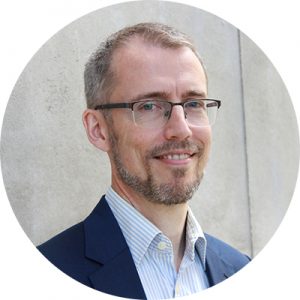Scientific Directions Update #9
Apologies for the somewhat long gap since my last Scientific Directions update – the SETAC Europe 26th LCA Symposium blasted everything else off the second half of my 2024 agenda that wasn’t rusted on. And what a blast it was! Our 515 delegates came from 39 countries, gave 163 platform presentations, 68 poster spotlight presentations, and showed 202 posters.
For a meeting originally planned for 100-200 delegates, welcoming more than double was a challenge! The process of reviewing abstracts had to be reorganized to handle the pressure, and at one point we discussed renting heated tents (it can snow here in late October!) to accommodate all the contributions. Poster locations were a little tight but manageable after we replanned the schedule and secured additional space from the Student Union outside the conference venue.
Thanks to the magnificent teamwork by the Swedish Life Cycle Center Technical Secretariat, administrative staff from Chalmers, SETAC’s Brussels bureau, and our local volunteers, the event was a big success!
Take home messages from the conference
Everyone probably came home with their own key insights. Personally, I was impressed by the breadth of work presented. Since chemical footprinting is one of my research topics, I was impressed by the plastics additives LCA database Heath Logan, DTU, has constructed, and how useful it might be for many analysts today. I’m also looking forward to the coming publication by Tianran Ding, LIST, after her presentation on method developments for predicting toxicity characterisation factors using machine learning. Both projects will help us avoid some serious gaps in current LCA.
My impression from the biogenic carbon modelling sessions, led by Cecilia Sundberg, SLU, was that considerable consensus has developed on this topic, despite its inherent challenges. It was interesting to learn about novel multiuse offshore farms when Laura Vittoria de Luca, Ghent University, presented her LCA on that topic. The innovative use of various national sustainability indicators by Teddy Serrano, DTU, got me thinking about the difference between what we need as people and what we are told to want as consumers.
In my mind such thinking about needs versus wants segued to the presentation by Hampus Andre, KTH about food delivery to huts in Sweden’s road-free northern wilderness, which involves busy helicopter traffic in the summertime. Hampus demonstrated that reducing carbon emissions through “sufficiency measures” with minimal impact on guest satisfaction depends more on reducing meat and dairy consumption than on limiting the number of those choppers flying in other kinds of fresh food.
Inspiring keynotes
We had three great keynote speeches from Björn Spak, Swedish Environmental Protection Agency, Mauro Cordella, European Commission, and Susan Iliefski-Janols, Essity. They each offered candid perspectives on the challenges of improving societal sustainability but also presented inspiring initiatives that are having practical effects across the Swedish context, in the European Union, and through a major international manufacturer of hygiene products.
A milestone for Swedish Life Cycle Center
I am very proud that Swedish Life Cycle Center has been able to deliver on the goals we presented in our 2022 Research Strategy, particularly our aim to “bring a scientifically important LCA/LCM conference to Sweden within the next 3 years with the Swedish Life Cycle Center as host”. We have plenty more work to do as a national node for research dialogue, but regarding that particular goal – mission accomplished!
Want to learn more?
If you want to learn more about any of the talks or sessions I mentioned, I recommend visiting the event webpage where you can download the program or a compilation of all the short abstracts in a book.
You can also read some longer, illustrated presentation summaries from platform presenters who published their extended abstracts.
Share your updates
If you would like us to highlight progress from researchers at your Swedish Life Cycle Center partner organization in the next Scientific Directions update, please feel free to contact me: [email protected].
Meet Gregory Peters, Scientific Director at the Swedish Life Cycle Center
Gregory Peters assumed the role of Scientific Director at the Swedish Life Cycle Center on September 1, 2021. He is a Professor in Environmental Systems Analysis at Chalmers University of Technology and is responsible for enhancing the Center’s scientific contributions. In this role, Gregory works closely with Center Director Maria Rydberg to ensure high-quality research in the field of life cycle assessment.
Learn more about Gregory Peters and his research on his Chalmers.se profile.

